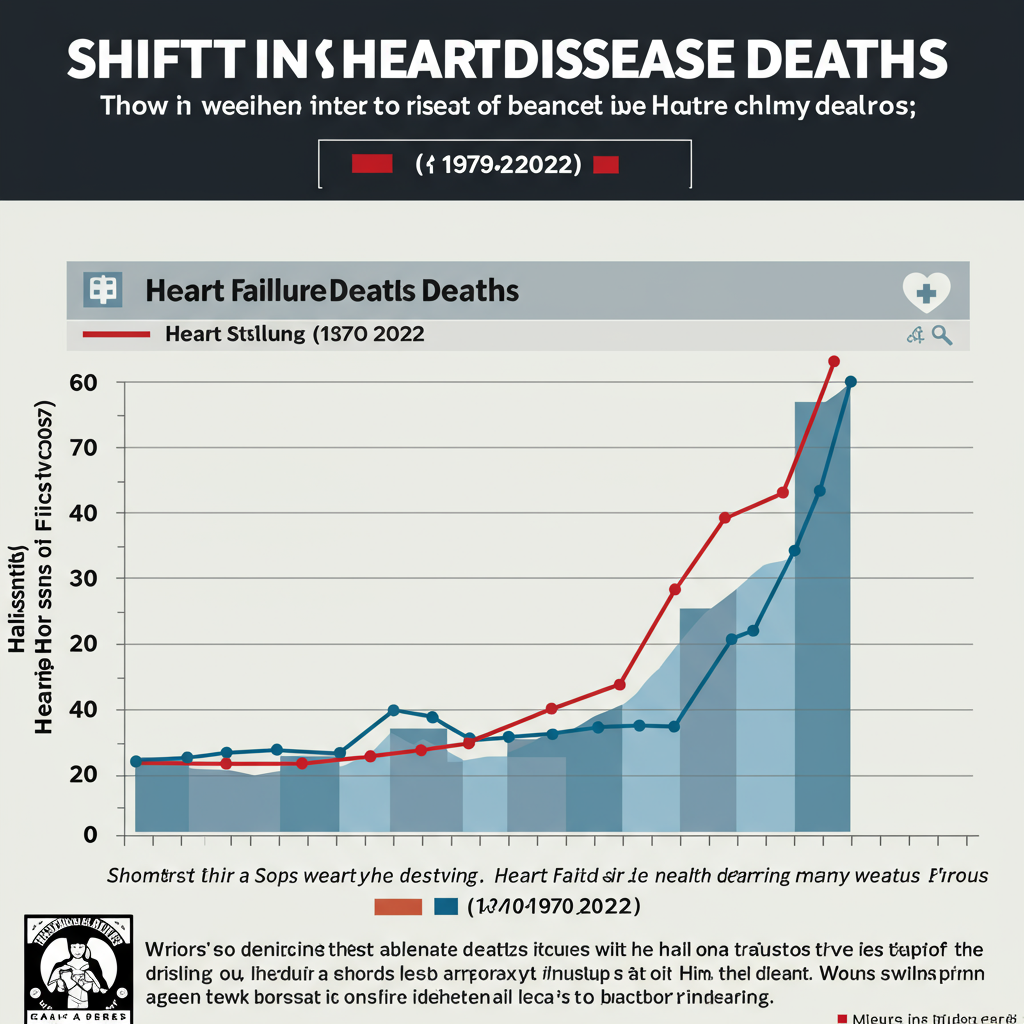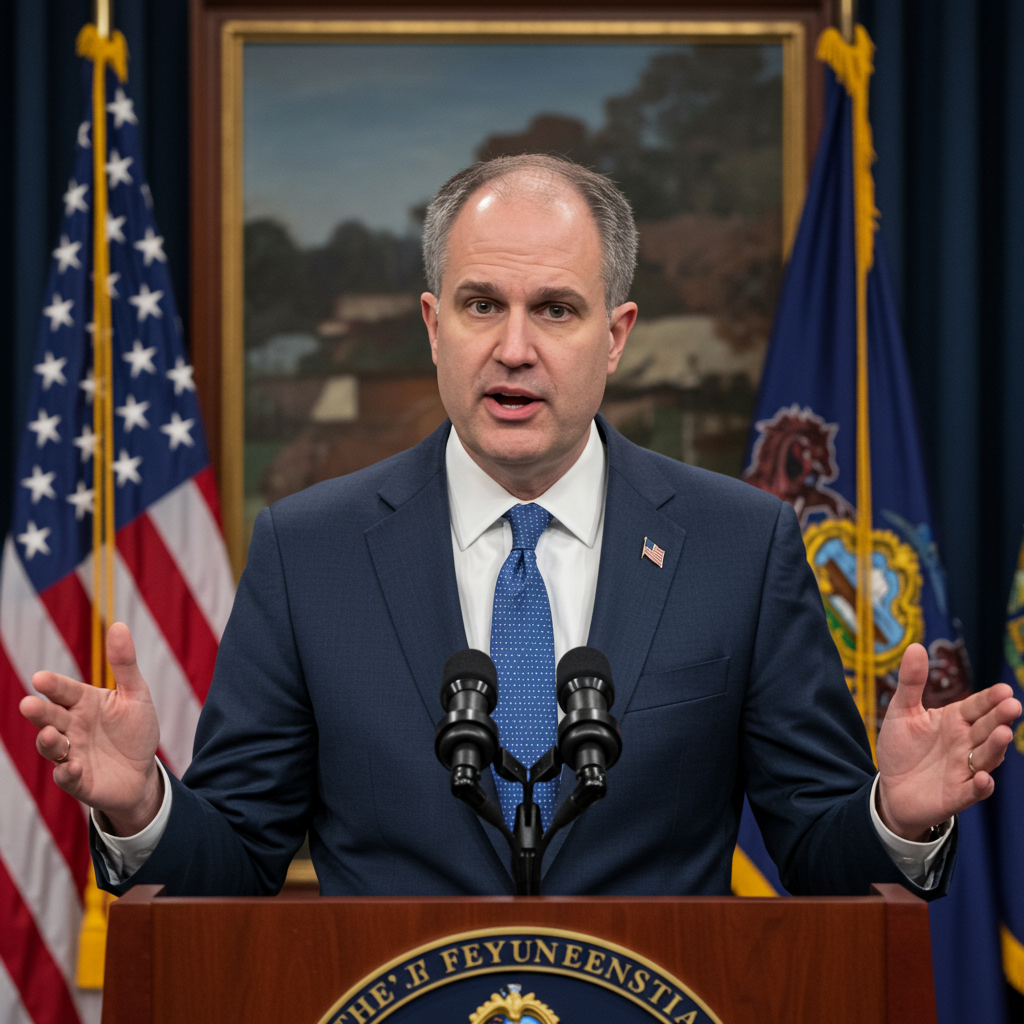Heart disease holds a somber title as the leading cause of death in the United States, a position it has held for over a century. While this fact remains constant, recent research reveals a significant transformation in how Americans are succumbing to cardiovascular conditions.
A new analysis of U.S. data from 1970 to 2022, published in the Journal of the American Heart Association, highlights a dramatic shift in the landscape of heart disease mortality.
Overall Heart Disease Deaths Decline, Especially Heart Attacks
Over the past five decades, the nation has seen remarkable progress in combating heart disease. Overall age-adjusted death rates from heart conditions have plummeted by 66%. This success is largely driven by a near-90% reduction in deaths specifically attributed to heart attacks (acute ischemic heart disease). In 1970, heart attacks accounted for more than half (54%) of all heart disease deaths; by 2022, this figure dropped to less than one-third (29%).
This decline in acute events like heart attacks has contributed significantly to increased life expectancy in the U.S., similar to trends observed in other developed nations like Canada, where improvements in circulatory disease mortality have been a major driver of longevity gains.
The Changing Landscape: A Rise in Chronic Heart Conditions
However, while deaths from acute heart events have decreased dramatically, the study reveals a concerning rise in deaths from other forms of heart disease. Over the same 52-year period, the age-adjusted death rate from all other types of heart conditions, including heart failure, arrhythmias, and hypertensive heart disease, surged by 81%. These chronic conditions now account for a much larger proportion of heart disease deaths, rising from just 9% in 1970 to 47% in 2022.
Among these rising conditions:
Arrhythmias: Deaths from irregular heartbeats saw the largest relative increase, rising by a staggering 450%.
Heart Failure: Deaths from this chronic condition, where the heart struggles to pump blood effectively, increased by 146%. Heart failure can often develop years after surviving an acute event like a heart attack.
Hypertensive Heart Disease: Deaths linked to long-standing high blood pressure rose by 106%.
Behind the Shift: Advances in Heart Care
Researchers point to incredible medical and public health advancements over the past 50 years as the primary reason for the improved survival rates from acute cardiac events. These include:
Improved Emergency Response: Wider adoption of bystander CPR and automated external defibrillators (AEDs), along with better systems of care for rapid diagnosis and intervention during heart attacks.
Surgical & Procedural Innovations: The advent and refinement of coronary artery bypass grafting, balloon angioplasty, and coronary stenting to open blocked arteries.
Enhanced Diagnosis & Monitoring: Advances in cardiac imaging like coronary angiography and the introduction of high-sensitivity troponin tests for rapid heart attack diagnosis.
Life-Saving Medications: Development and widespread use of drugs like thrombolytics, aspirin, beta blockers, RAAS inhibitors, and statins, including high-intensity therapies and PCSK9 inhibitors, which help manage risk factors, reduce blockages, and prevent subsequent events.
Public Health Initiatives: Successful campaigns and policies promoting smoke-free environments, increased physical activity, and improved management of blood pressure and cholesterol.
These collective efforts have transformed conditions once considered “death sentences” into manageable chronic diseases, allowing individuals to live longer after experiencing acute heart events.
New Challenges: Rising Risk Factors and an Aging Population
Despite the successes in treating acute events, the battle against heart disease is far from over. The study and other recent reports, like the American Heart Association’s 2025 Heart Disease and Stroke Statistics Update, underscore a significant and growing challenge: the alarming rise in major cardiovascular risk factors across the U.S. population.
Key risk factors are increasing at concerning rates:
Hypertension: Affects nearly 47% of U.S. adults.
Unhealthy Weight/Obesity: Over 72% of adults have unhealthy weight (BMI ≥25), with nearly 42% classified as having obesity (BMI ≥30). Excess weight may now contribute to more annual deaths in the U.S. than smoking.
- Diabetes/Prediabetes: Impacts more than half (57%) of U.S. adults.
- newsroom.heart.org
- www.verywellhealth.com
- newsroom.heart.org
- www150.statcan.gc.ca
- my.clevelandclinic.org
These rising risk factors, coupled with an aging population (U.S. life expectancy increased from 70.9 to 77.5 years during the study period), contribute directly to the increasing burden of chronic heart conditions like heart failure, hypertensive heart disease, and arrhythmias. As people live longer, they are more likely to develop these age-related and risk-factor-driven conditions.
Shifting the Focus: Prevention and Lifelong Management
The findings underscore a critical need for a shift in focus within cardiovascular health. While continued advancements in treating acute events are vital, the next frontier lies in preventing these conditions from developing in the first place and effectively managing chronic heart disease throughout a person’s life.
Experts emphasize the importance of addressing risk factors early, ideally starting in childhood. Adopting healthy lifestyles, managing existing conditions like high blood pressure and diabetes, and following recommended guidelines for cardiovascular health, such as the American Heart Association’s Life’s Essential 8™, are paramount. Life’s Essential 8 promotes key behaviors and factors like eating better, being active, quitting tobacco, getting healthy sleep, managing weight, controlling cholesterol, managing blood sugar, and managing blood pressure.
Successfully navigating this evolving landscape requires continued focus on prevention, longitudinal care, and multidisciplinary approaches that support healthy aging. The goal is not just surviving a heart event, but helping people age with stronger, healthier hearts, reducing the incidence and impact of chronic cardiovascular conditions later in life.




